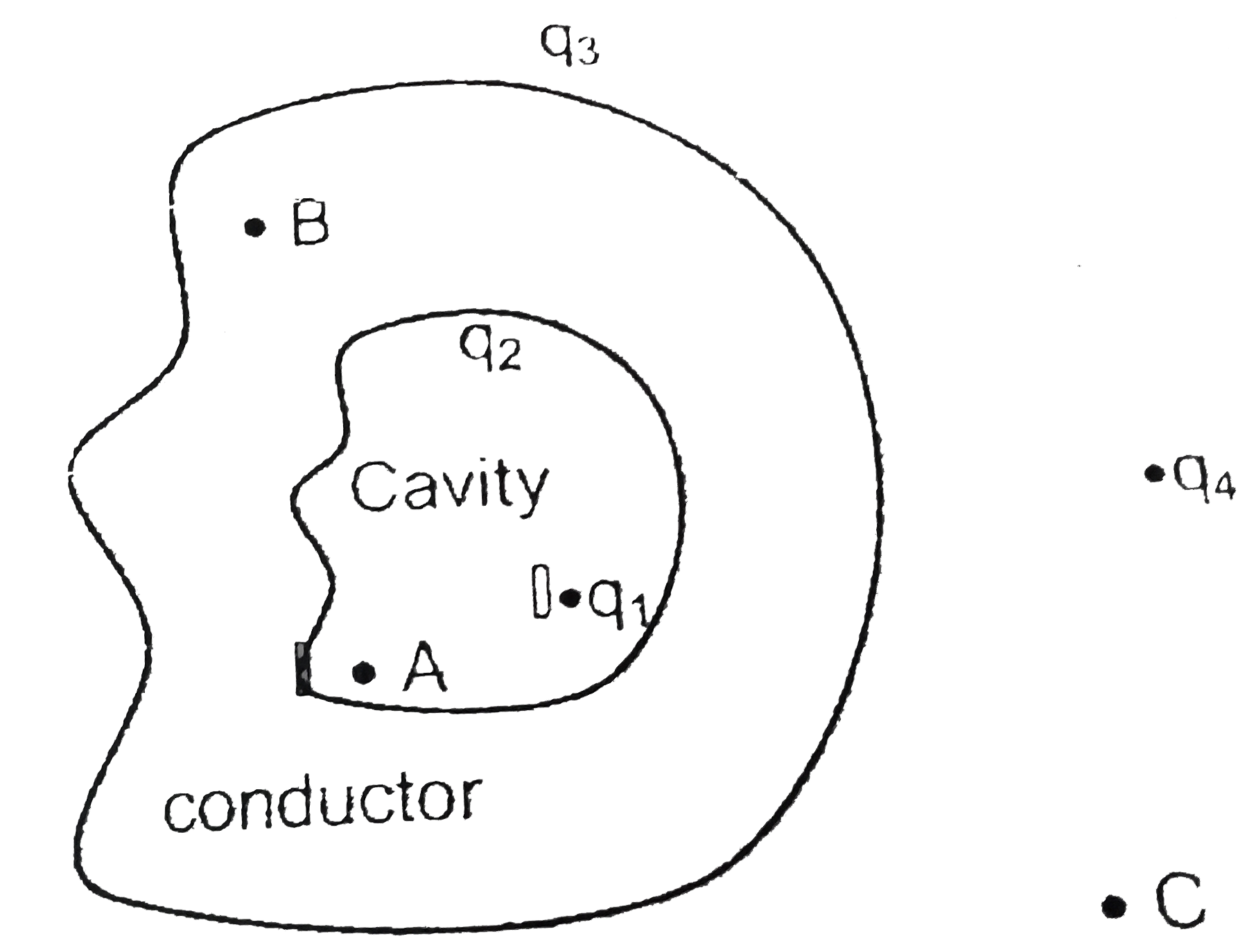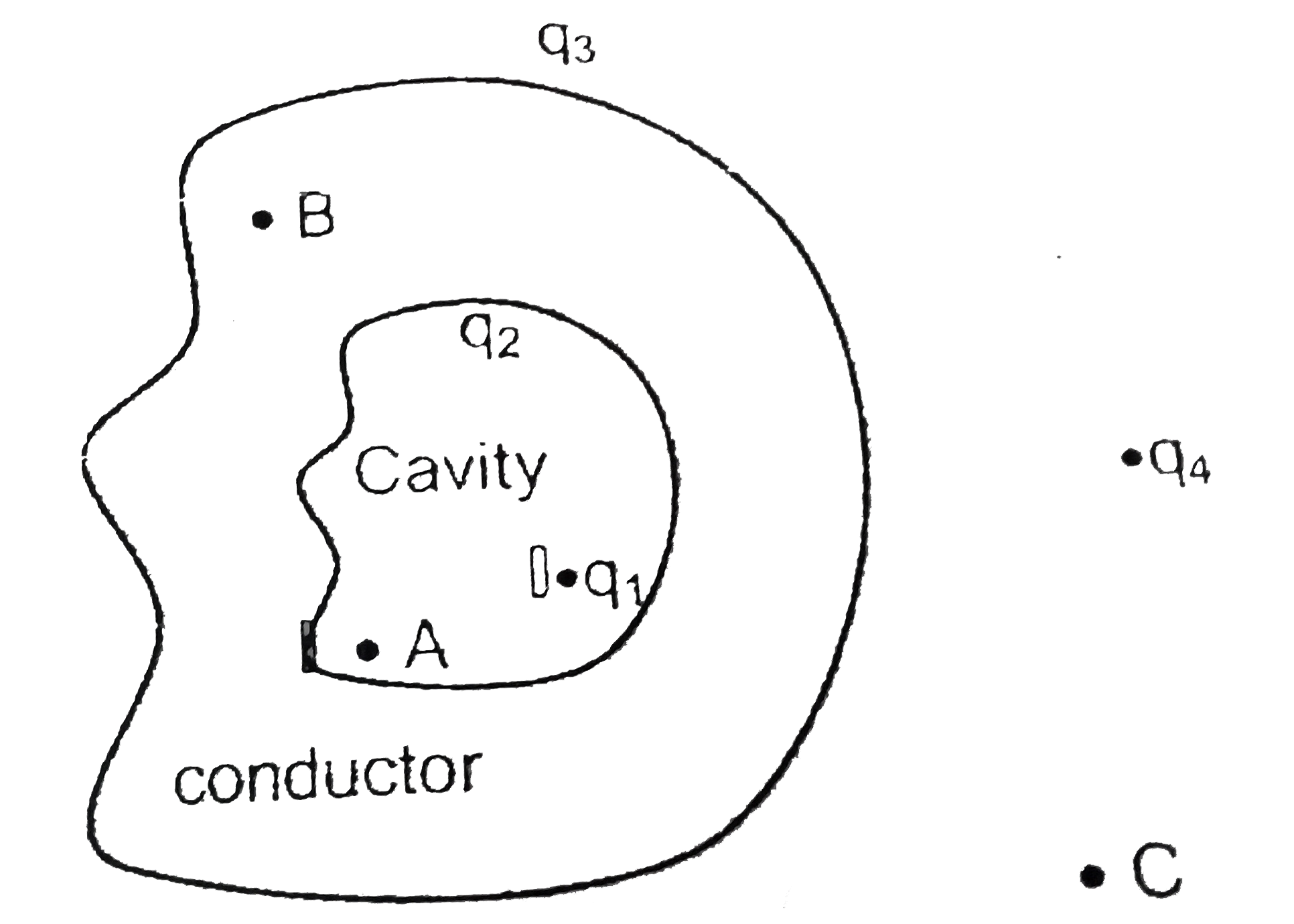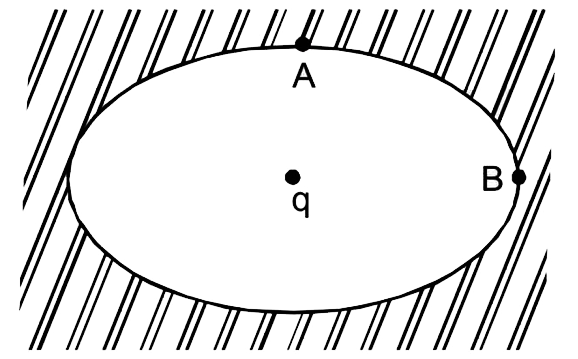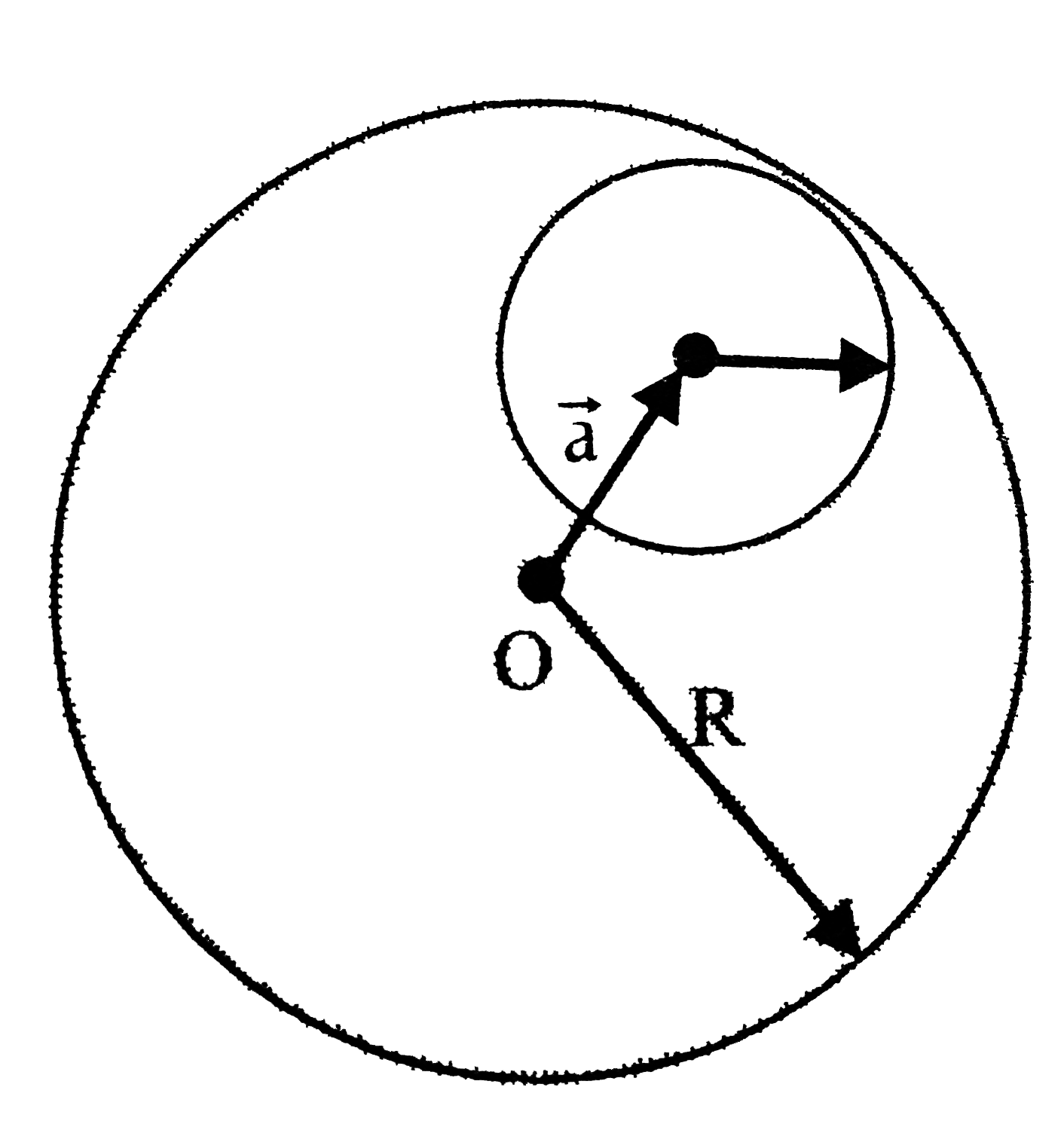A conductor having a cavity is given a positive charge. Then field strength EA,EBandEC at point A( within cavity ), at B ( within conducutor but outside cavity ) and C( near conductor and outside ) respectively will be :
EA=0,EB=0,EC=0
EA≠0,EB=0,EC≠0
EA≠0,EB≠0,EC≠0
None of the above
The correct Answer is:D
To solve the problem, let's analyze the electric field strengths at points A, B, and C in relation to the charged conductor with a cavity.
1. Understanding the System:
- We have a conductor that has a cavity inside it and is given a positive charge.
- Points A, B, and C are defined as follows:
- Point A: Inside the cavity.
- Point B: Inside the conductor but outside the cavity.
- Point C: Outside the conductor.
2. Electric Field Inside the Cavity (Point A):
- According to electrostatic principles, the electric field inside a conductor is zero when it is in electrostatic equilibrium.
- Since point A is inside the cavity of the conductor, the electric field at point A (EA) is also zero because the charges on the conductor redistribute themselves in such a way that they cancel any electric field within the cavity.
- Result: EA=0
3. Electric Field Inside the Conductor (Point B):
- For point B, which is inside the conductor but outside the cavity, the electric field is also zero. This is because the electric field inside a conductor in electrostatic equilibrium is always zero.
- Result: EB=0
4. Electric Field Outside the Conductor (Point C):
- For point C, which is outside the conductor, the positive charge on the conductor creates an electric field. The electric field outside a charged conductor behaves as if all the charge were concentrated at a point at the center of the conductor.
- The electric field at point C can be calculated using Coulomb's law:
EC=kQr2
where k is Coulomb's constant, Q is the total charge on the conductor, and r is the distance from the center of the conductor to point C.
- Result: EC≠0
5. Final Summary:
- The electric field strengths at points A, B, and C are:
- EA=0
- EB=0
- EC≠0
Conclusion:
The final answer is:
- EA=0
- EB=0
- EC≠0
Since none of the options provided in the question match this conclusion, the answer is option D: none of the above.
- We have a conductor that has a cavity inside it and is given a positive charge.
- Points A, B, and C are defined as follows:
- Point A: Inside the cavity.
- Point B: Inside the conductor but outside the cavity.
- Point C: Outside the conductor.
- According to electrostatic principles, the electric field inside a conductor is zero when it is in electrostatic equilibrium.
- Since point A is inside the cavity of the conductor, the electric field at point A (EA) is also zero because the charges on the conductor redistribute themselves in such a way that they cancel any electric field within the cavity.
- Result: EA=0
- For point B, which is inside the conductor but outside the cavity, the electric field is also zero. This is because the electric field inside a conductor in electrostatic equilibrium is always zero.
- Result: EB=0
- For point C, which is outside the conductor, the positive charge on the conductor creates an electric field. The electric field outside a charged conductor behaves as if all the charge were concentrated at a point at the center of the conductor.
- The electric field at point C can be calculated using Coulomb's law:
EC=kQr2
where k is Coulomb's constant, Q is the total charge on the conductor, and r is the distance from the center of the conductor to point C.
- Result: EC≠0
- The electric field strengths at points A, B, and C are:
- EA=0
- EB=0
- EC≠0
The final answer is:
- EA=0
- EB=0
- EC≠0
Topper's Solved these Questions
- BOOK - VMC MODULES ENGLISHCHAPTER - ELECTROSTATICSEXERCISE - LEVEL - 260videos
ELECTROSTATICS
- BOOK - VMC MODULES ENGLISHCHAPTER - ELECTROSTATICSEXERCISE - JEE MAIN65videos
ELECTROSTATICS
- BOOK - VMC MODULES ENGLISHCHAPTER - ELECTROSTATICSEXERCISE - LEVEL - 0 (LONG ANSWER TYPE )8videos
ELECTROSTATICS
- BOOK - VMC MODULES ENGLISHCHAPTER - ELECTROMAGNETIC INDUCTION & ALTERNATIVE CURRENT EXERCISE - IMPECCABLE52videos
ELECTROMAGNETIC INDUCTION & ALTERNATIVE CURRENT
- BOOK - VMC MODULES ENGLISHCHAPTER - ENERGY & MOMENTUMEXERCISE - JEE ADVANCE (ARCHIVE) - TRUE/FALSE TYPE1videos
ENERGY & MOMENTUM
Similar Questions
Assertion : In a cavity within a conductor, the electric field is zero.
Reason : Charges in a conductor reside only at its surface.View Solution
We have a fixed conductor having a cavity inside. There is a point charge q1 kept inside the cavity charge appearing at the inner surface of the cavity is q2. Charge appearing at outer surface of conductor is q3 and there lies another point charge q4 out side the conductor. Whole situation is shown in figure. q4. is held stationary by applying an external force →F0 on it. Three points A, B and C are shown. Answer the following two questions.
Q. If keeping the magnitude and nature of q1 fixed position of q1 is changed inside the cavity. Then choose the correct option(s)View Solution
We have a fixed conductor having a cavity inside. There is a point charge q1 kept inside the cavity charge appearing at the inner surface of the cavity is q2. Charge appearing at outer surface of conductor is q3 and there lies another point charge q4 out side the conductor. Whole situation is shown in figure. q4. is held stationary by applying an external force →F0 on it. Three points A, B and C are shown. Answer the following two questions.
Q. If keeping the nature and position of q1 fixed, magnitude of q1 is changed, then choose the INCORRECT options(s)View SolutionA conductor with a cavity is charged positively and its surface charge density is σ. If E and V represent the electric field and potential, then inside the cavity
View SolutionThe figure shows a charge q placed inside a cavity in an uncharged conductor. Now if an external electric field is swiched on
 View Solution
View SolutionWhat is the field in the cavity if a conductor having a cavity is charged? Does the result depend on the shape and size of cavity or conductor ?
View SolutionAn ellipsoidal cavity is carved within a perfect conductor. A positive charge q is placed at the centre of the cavity. The points A and B are on the cavity surface as shown in the figure. Then
 View Solution
View SolutionA point charge q1 is placed inside cavity 1 and another point charge q2 is inside cavity 2. A point charge q is placed outside the conductor. For the situation described above, answer the following questions.
If charge q2 is at point Q (inside cavity 2), then →E at the center of cavity 2 due to induced charge on the surface of cavity 2 would beView SolutionA sphere of radius R has a uniform volume density ρ. A spherical cavity of radius b, whose center lies at →a, is removed from the sphere.
i. Find the electric field at any point inside the spherical cavity.
ii. Find the electric field outside the cavity
(a) at points inside the large sphere but outside the cavity and
(b) at points outside the large sphere.
 View Solution
View SolutionAn uncharged conductor A is brought near a positively charged conductor B. The size of the conductor A is much greater than the size of conductor B. Then,
View Solution

